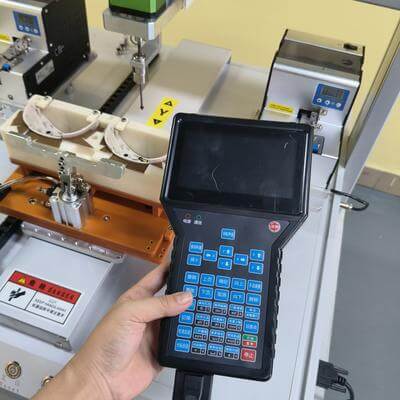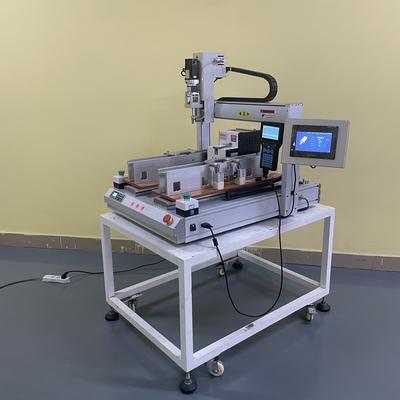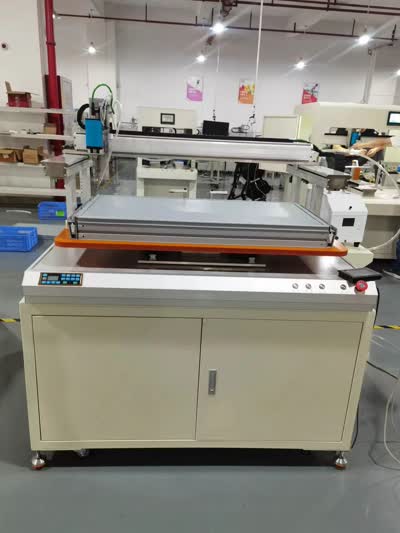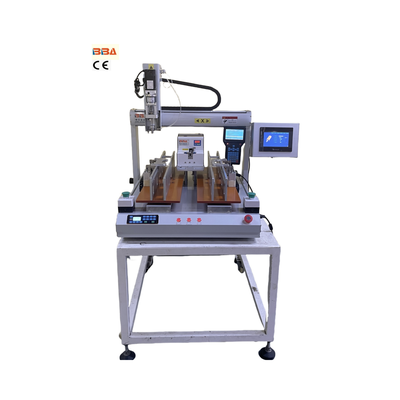Automatic Screw Fastening System | Efficient Assembly Solution for Electronics Manufacturing
In the high-precision world of electronics manufacturing, securing components with screws remains a fundamental yet complex task. Screw fastening machines have evolved into indispensable automation solutions, ensuring reliability while addressing intricate challenges unique to circuit boards, micro-devices, and consumer electronics assembly. This article explores why these specialized systems are transforming production efficiency.
Overcoming Manual Fastening Limitations
Manual screwdriving introduces risks that jeopardize product integrity. Human error can cause cross-threading, stripped screws, or inconsistent torque—each capable of compromising electrical connections or structural stability. Fatigue further impacts precision during high-volume repetitions, while static discharge from operators can damage sensitive PCB components. As devices shrink and tolerances tighten, automation becomes essential to maintain micron-level accuracy and eliminate variability.
Core Capabilities of Modern Screw Fastening Systems
Today’s screw fastening machines integrate multiple advanced technologies to handle electronics assembly demands. Multi-axis robotic arms position drivers with submillimeter repeatability, adapting effortlessly between varying product geometries. Features critical for delicate electronics include:
- Low-voltage anti-static systems preventing ESD damage
- Torque monitoring with real-time ±0.5% accuracy
- Micro-screw handling for M0.6 to M3 sizes
- Computer vision for screw presence verification
Inline sensors immediately halt processes upon detecting abnormalities like stripped heads or misalignment, while encrypted data logging provides full traceability for regulatory compliance—essential for automotive electronics or medical devices.
Operational Advantages Driving Adoption
Automatic screw fastening delivers measurable improvements across manufacturing KPIs. Deployment typically achieves 65–85% cycle time reductions, unlocking higher throughput without expanding floor space. Consistent torque application reduces warranty claims by up to 90% compared to manual methods by eliminating field failures from connection faults. The elimination of repetitive motions also lowers ergonomic risks, freeing skilled technicians for value-added quality control roles.
Essential Selection Criteria
Not all systems align with electronics production nuances. Key evaluation factors include:
- Material compatibility: Non-marring tooling and vacuum extraction prevent aluminum or brass particulate contamination.
- Flexible configurations: Modular designs allowing rapid adaptation to new products via programmable depth stops and magazine-switching.
- Integration readiness: Compatibility with MES/PLC controls to synchronize with existing conveyor lines or robotic cells.
- Maintenance demands: Sealed components to withstand solder paste residues while enabling quick cartridge replacements.
Environmentally conscious manufacturers also consider energy-efficient servo systems, using up to 50% less power than pneumatic alternatives.
Future Trends: Smart Features Evolving Expectations
Artificial intelligence now enables predictive analytics, with machines learning optimal torque profiles for different material combinations to prevent cracking ceramic capacitors. IoT connectivity allows remote diagnostics, while augmented reality interfaces guide changeovers via projection mapping. These advancements elevate systems from simple fasteners to networked quality gatekeepers that continuously refine production intelligence.
Transitioning to automated screw fastening represents not merely an efficiency gain, but a strategic upgrade enabling error-proof assembly of next-generation electronics. As miniaturization accelerates with wearables and micro-robotics, manufacturers investing in these systems secure reliability while future-proofing assembly processes.
| Product Name | Applicable industries |
| Dual Head Screwdriver | Home Appliance Production |



